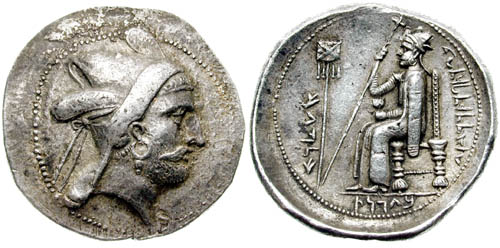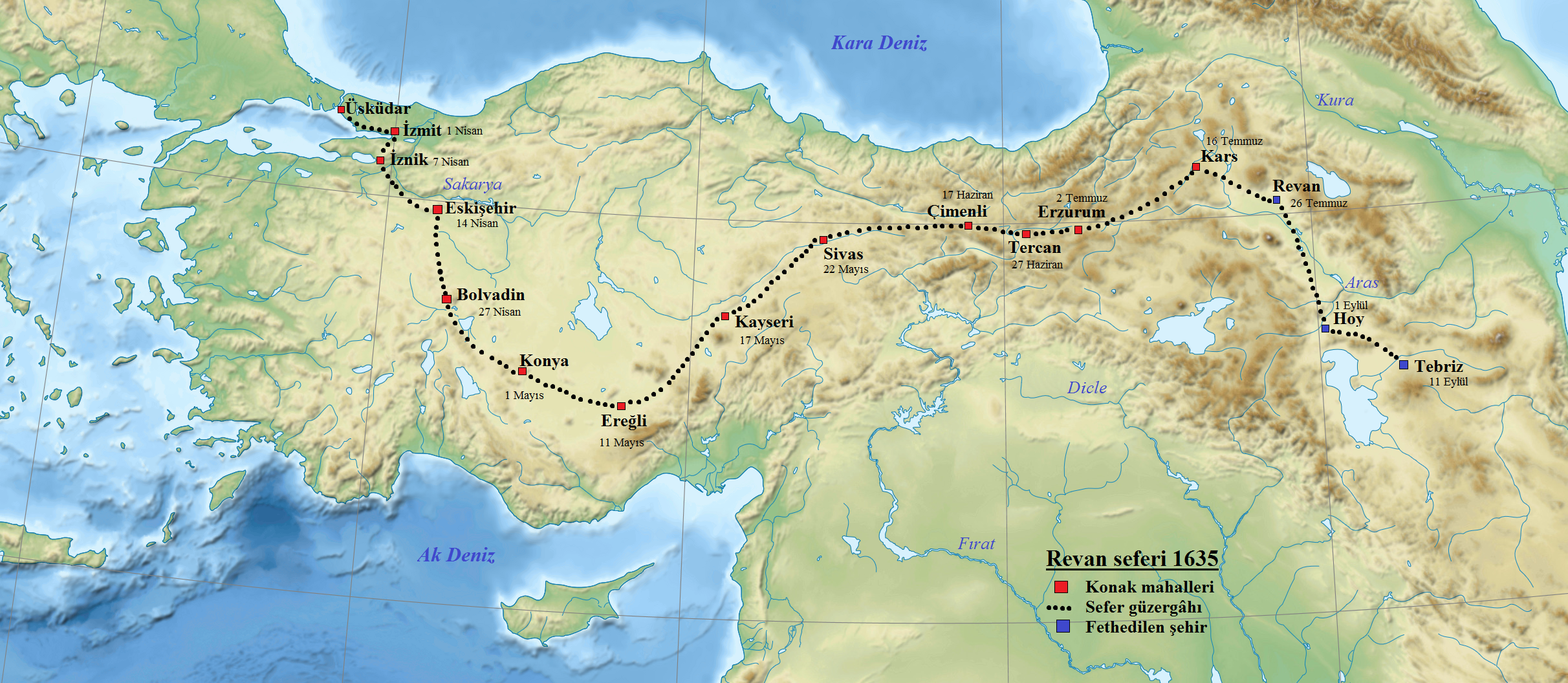|
Iran–Iraq Border
The Iran–Iraq border runs for 1,599 km (994 mi) from the tripoint with Turkey in the north down to the Shatt al-Arab (known as Arvand Rud in Iran) waterway and out to the Persian Gulf in the south. Although the boundary was first determined in 1639, certain disputes continue, particularly surrounding navigation on the Shatt al-Arab. Boundary line The border starts in the north at the Turkish tripoint (at 37° 08' 44" N and 44° 47' 05" E). It then proceeds southwards via a series of irregular lines through the Zagros Mountains, trending broadly to the south-east, save for short stretches where it utilises rivers (such as the Zab as Saghir and Diyala River) and a protrusion of Iraqi territory east of Sulaymaniyah in Penjwen District. To the east of Al Amarah the irregular lines cease, and the border continues southward via four straight line sections through marshland down to the Nahr al-Khayin river. The border follows this river briefly down to the Shatt al-Arab, the ... [...More Info...] [...Related Items...] OR: [Wikipedia] [Google] [Baidu] |
Flag Of Iran
The national flag of the Iran, Islamic Republic of Iran, also known as the ''Tricolour Flag of Iran'' (), is a tricolour (flag), tricolour featuring the Pan-Iranian colors comprising equal horizontal bands of green, white and red with the emblem of Iran, national emblem (''Allah'') in red centred on the white band and the ''takbir'' written 11 times each in the Kufic script in white, at the bottom of the green and the top of the red band. After the Iranian Revolution of 1979, the present-day flag was adopted on 29 July 1980. Many Iranian diaspora, Iranian exiles opposed to the Iranian government use the Iranian monarchy tricolour flag with the Lion and Sun at the center, or the Interim Government of Iran, tricolour without additional emblems. Flag description Colour symbolism The Iranian flag, which was later designed under Darius I, symbolised this unity and victory (green above white and red) as the flag of the people of Iran. Colour scheme Construction Physical requirem ... [...More Info...] [...Related Items...] OR: [Wikipedia] [Google] [Baidu] |
Al Amarah
Amarah (), also spelled Amara, is a city in south-eastern Iraq, located on a low ridge next to the Tigris River waterway south of Baghdad about 50 km (31 mi) from the border with Iran. It lies at the northern tip of the marshlands between the Tigris and Euphrates. It had a population of about 340,000 in 2002, 420,000 in 2005, and 1,100,000 in 2020. Amarah is the seat of the Maysan Province. A major trading center for the surrounding agricultural area, the city is known for woven goods and silverware. The staple economic goods produced in northern Amarah are winter cereals such as wheat and barley, as well as animals such as sheep and horses. History The city was founded in the 1860s as an Ottoman military outpost from which the empire tried to control the warring Banu Lam and Al Bu Muhammad tribes. In 1915 Amarah was captured by the British. Before the revolution in 1958 Amarah was known for its feudal system with local estate-holders maintaining private militias. A ... [...More Info...] [...Related Items...] OR: [Wikipedia] [Google] [Baidu] |
Russia
Russia, or the Russian Federation, is a country spanning Eastern Europe and North Asia. It is the list of countries and dependencies by area, largest country in the world, and extends across Time in Russia, eleven time zones, sharing Borders of Russia, land borders with fourteen countries. Russia is the List of European countries by population, most populous country in Europe and the List of countries and dependencies by population, ninth-most populous country in the world. It is a Urbanization by sovereign state, highly urbanised country, with sixteen of its urban areas having more than 1 million inhabitants. Moscow, the List of metropolitan areas in Europe, most populous metropolitan area in Europe, is the capital and List of cities and towns in Russia by population, largest city of Russia, while Saint Petersburg is its second-largest city and Society and culture in Saint Petersburg, cultural centre. Human settlement on the territory of modern Russia dates back to the ... [...More Info...] [...Related Items...] OR: [Wikipedia] [Google] [Baidu] |
Tigris River
The Tigris ( ; see below) is the eastern of the two great rivers that define Mesopotamia, the other being the Euphrates. The river flows south from the mountains of the Armenian Highlands through the Syrian and Arabian Deserts, before merging with the Euphrates and reaching to the Persian Gulf. The Tigris passes through historical cities like Mosul, Tikrit, Samarra, and Baghdad. It is also home to archaeological sites and ancient religious communities, including the Mandaeans, who use it for baptism. In ancient times, the Tigris nurtured the Assyrian Empire, with remnants like the relief of King Tiglath-Pileser. Today, the Tigris faces modern threats from geopolitical instability, dam projects, poor water management, and climate change, leading to concerns about its sustainability. Efforts to protect and preserve the river's legacy are ongoing, with local archaeologists and activists working to safeguard its future. Etymology The Ancient Greek form () is an alternativ ... [...More Info...] [...Related Items...] OR: [Wikipedia] [Google] [Baidu] |
Ottoman–Safavid War (1623–1639)
The Ottoman–Safavid War of 1623–1639 was a conflict fought between the Ottoman Empire and Safavid Iran, then the two major powers of Western Asia, over control of Mesopotamia. After initial Safavid success in recapturing Baghdad and most of modern Iraq, having lost it for 90 years, the war became a stalemate as the Safavids were unable to press further into the Ottoman Empire, and the Ottomans themselves were distracted by wars in Europe and weakened by internal turmoil. Eventually, the Ottomans were able to recover Baghdad, taking heavy losses in Capture of Baghdad (1638), the final siege, and the signing of the Treaty of Zuhab ended the war in an Ottoman victory. Roughly speaking, the treaty restored the borders of Peace of Amasya, 1555, with the Safavids keeping Safavid Daghestan, Daghestan, Safavid Shirvan, Shirvan, eastern History of Georgia (country), Georgia, and Eastern Armenia, while western Georgia and Western Armenia decisively came under Ottoman rule. The eastern ... [...More Info...] [...Related Items...] OR: [Wikipedia] [Google] [Baidu] |
Alexander Mikaberidze
Alexander Mikaberidze ( ka, ალექსანდრე მიქაბერიძე; born 27 January 1978) is a Georgian lawyer, author and historian who specializes in Napoleonic studies. He is a full professor of history and social sciences at Louisiana State University in Shreveport, where he holds the Ruth Herring Noel Endowed Chair for the Curatorship of the James Smith Noel Collection, one of the largest private collections of antiquarian books, prints, and maps in the United States. Education and career Mikaberidze was born in 1978 in Aktobe, Kazakh SSR, where his parents were working. In 1990, they returned to the Georgian SSR, which gained independence in 1991. He graduated from Tbilisi State University in 1999 with a degree in international law. From 1996 to 2000, he worked with the Ministry of Foreign Affairs of Georgia, where he handled human rights issues and relations with the Council of Europe. Napoleonic studies Mikaberidze is a specialist on Napole ... [...More Info...] [...Related Items...] OR: [Wikipedia] [Google] [Baidu] |
Mesopotamia
Mesopotamia is a historical region of West Asia situated within the Tigris–Euphrates river system, in the northern part of the Fertile Crescent. Today, Mesopotamia is known as present-day Iraq and forms the eastern geographic boundary of the modern Middle East. Just beyond it lies southwestern Iran, where the region transitions into the Iranian plateau, Persian plateau, marking the shift from the Arab world to Iran. In the broader sense, the historical region of Mesopotamia also includes parts of present-day Iran (southwest), Turkey (southeast), Syria (northeast), and Kuwait. Mesopotamia is the site of the earliest developments of the Neolithic Revolution from around 10,000 BC. It has been identified as having "inspired some of the most important developments in human history, including the invention of the wheel, the planting of the first cereal crops, the development of cursive script, mathematics, astronomy, and agriculture". It is recognised as the cradle of some of t ... [...More Info...] [...Related Items...] OR: [Wikipedia] [Google] [Baidu] |
Peace Of Amasya
The Peace of Amasya (; ) was a treaty agreed to on May 29, 1555, between Shah Tahmasp I of Safavid Iran and Sultan Suleiman the Magnificent of the Ottoman Empire at the city of Amasya, following the Ottoman–Safavid War (1532–1555), Ottoman–Safavid War of 1532–1555. Overview The treaty defined the border between Iran and the Ottoman Empire and was followed by twenty years of peace. By this treaty, Armenia and Georgia (country), Georgia were divided equally between the two, with Western Armenia and western Georgia (incl. western Samtskhe atabegate, Samtskhe) falling in Ottoman hands while Eastern Armenia and eastern Georgia (incl. eastern Samtskhe) stayed in Iranian hands. The Ottoman Empire obtained most of Iraq, including Baghdad, which gave them access to the Persian Gulf, while the Persians retained their former capital Tabriz and all their other northwestern territories in the Caucasus and as they were prior to the wars, such as Dagestan and all of what is now Azerbaij ... [...More Info...] [...Related Items...] OR: [Wikipedia] [Google] [Baidu] |
Safavid Empire
The Guarded Domains of Iran, commonly called Safavid Iran, Safavid Persia or the Safavid Empire, was one of the largest and longest-lasting Iranian empires. It was ruled from 1501 to 1736 by the Safavid dynasty. It is often considered the beginning of History of Iran, modern Iranian history, as well as one of the gunpowder empires. The Safavid List of monarchs of Persia, Shāh Ismail I, Ismā'īl I established the Twelver denomination of Shia Islam, Shīʿa Islam as the Safavid conversion of Iran to Shia Islam, official religion of the empire, marking one of the most important turning points in the history of Islam. An Iranian dynasty rooted in the Sufi Safavid order founded by sheikhs claimed by some sources to be of Kurds, Kurdish origin, it heavily intermarried with Turkoman (ethnonym), Turkoman, Georgians, Georgian, Circassians, Circassian, and Pontic Greeks, Pontic GreekAnthony Bryer. "Greeks and Türkmens: The Pontic Exception", ''Dumbarton Oaks Papers, Vol. 29'' (1975), ... [...More Info...] [...Related Items...] OR: [Wikipedia] [Google] [Baidu] |
Ottoman Empire
The Ottoman Empire (), also called the Turkish Empire, was an empire, imperial realm that controlled much of Southeast Europe, West Asia, and North Africa from the 14th to early 20th centuries; it also controlled parts of southeastern Central Europe, between the early 16th and early 18th centuries. The empire emerged from a Anatolian beyliks, ''beylik'', or principality, founded in northwestern Anatolia in by the Turkoman (ethnonym), Turkoman tribal leader Osman I. His successors Ottoman wars in Europe, conquered much of Anatolia and expanded into the Balkans by the mid-14th century, transforming their petty kingdom into a transcontinental empire. The Ottomans ended the Byzantine Empire with the Fall of Constantinople, conquest of Constantinople in 1453 by Mehmed II. With its capital at History of Istanbul#Ottoman Empire, Constantinople (modern-day Istanbul) and control over a significant portion of the Mediterranean Basin, the Ottoman Empire was at the centre of interacti ... [...More Info...] [...Related Items...] OR: [Wikipedia] [Google] [Baidu] |





